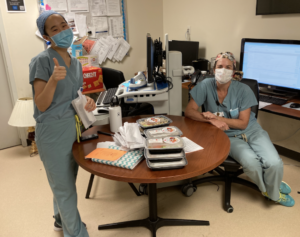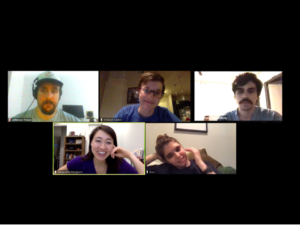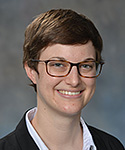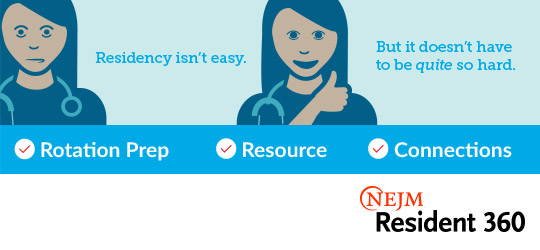September 3rd, 2020
“Never Waste a Crisis”: Perspectives from History and Today
Holland Kaplan, MD
The mantra “Never waste a crisis” has stuck with me for the past several months. This statement was reportedly made by Winston Churchill in the 1940s, during World War II. However, a well-known internal medicine faculty member and leader at Baylor College of Medicine, Dr. David Hyman, who recently passed away, also gave us this advice in the midst of the COVID-19 pandemic.
The pandemic has taken so much from us. For some, it has taken away the lives of beloved family members, friends, and colleagues. For many, it has taken away financial security, jobs, the schooling of children, any remaining trust in our government, and the ability to enjoy a meal out at a restaurant. And, for all of us, it has taken away the life we knew before this crisis struck.
At my institution, the COVID-19 pandemic has seriously altered the way our hospitals, residency program, and individual lives function. Thankfully, we have not seen devastation to the degree that other cities experienced earlier this year. Nonetheless, even in the largest medical center in the world, I have witnessed hospital wards transitioned to intensive care units, rationing of masks and other personal protective equipment, shortages of high-flow oxygen machines, and reconfiguration of entire staffing models at both the faculty and trainee levels.
But there is hope that progress and opportunity can arise from any crisis, whether war, natural disaster, economic turmoil, or pandemic. And there is truth to the homage that, indeed, we should “Never waste a crisis.” Because out of the depths of any crisis can arise new ideas, previously unidentified opportunities, and real change. Below, I have identified five themes for making the most of a catastrophe. I have also provided examples of each item – one historical example and smaller-scale examples of how graduate medical education, in my residency program or at-large, has made progress in the setting of this pandemic.
1. Rapid innovation
Crises can prompt rapid innovation where there might have been none otherwise. Historically, World War I was an expansive and far-reaching crisis. Prior to this war, in the early 1900s, use of blood banks and blood transfusions was infrequent. The trench warfare of WWI resulted in particularly high mortality. During the war, blood transfusions became increasingly common, particularly as an approach for managing hemorrhagic shock prior to surgical intervention. Without WWI, the development of blood banking and blood transfusions as a standard of care might not have developed until significantly later in history (Transfus Med 2014; 24:325).
During the COVID-19 pandemic, almost all of our didactic time, including morning report, noon conference, didactic half-days, and simulation sessions have transitioned to occur virtually. Although there have been challenges with this innovative approach to learning, there have been positive aspects as well. Our morning report case sessions now regularly have over 100 attendees, including not only our own internal medicine residents but also faculty from across all of our pavilions, residents from other specialties (such as radiology and family medicine), medical students looking for additional learning opportunities, and prospective applicants to our program. This level of accessibility and exposure was simply impossible with our in-person conferences. The additional faculty attendance has made it easy to get a “consult” on a complex case in the moment during morning report. Our virtual noon conference has enabled us to create a recorded library of lectures. Thus, our residents are able to view any content they missed. Overall, this modality of learning has enhanced accessibility of our didactics.
2. New levels of teamwork and cooperation
Catastrophes have a tendency to force people to work together to overcome them. As a result of World War II, the United Nations became the most recognizable, powerful intergovernmental organization in the world. At its founding, the UN had 51 member states. It now is comprised of 193 states, including almost every sovereign state in the world. One can debate the effectiveness of various components of the UN, but this body represents the largest effort at global cooperation in history. Among a variety of other accomplishments, the UN facilitated the adoption of the Universal Declaration of Human Rights in 1948. Without a crisis to promote its formation, the UN might not have been founded.
 The degree of teamwork and cooperation I observed during the worst of this surge of COVID-19 in Houston has been inspiring. Our internal medicine residents cumulatively stepped up to provide over 1000 hours of additional coverage due to the extra patient load. Residents happily helped cover when colleagues were sick. On a larger scale, after our institution declared ACGME “pandemic status” we received innumerable offers of assistance from residents in other programs asking how they could help with the extra patient load. From gastroenterology fellows helping in our COVID unit to ophthalmology residents backing us up in the intensive care unit to surgical residents covering a multitude of medical ICU patients, this crisis gave us the opportunity to form relationships with people we otherwise might never have had the opportunity to work with.
The degree of teamwork and cooperation I observed during the worst of this surge of COVID-19 in Houston has been inspiring. Our internal medicine residents cumulatively stepped up to provide over 1000 hours of additional coverage due to the extra patient load. Residents happily helped cover when colleagues were sick. On a larger scale, after our institution declared ACGME “pandemic status” we received innumerable offers of assistance from residents in other programs asking how they could help with the extra patient load. From gastroenterology fellows helping in our COVID unit to ophthalmology residents backing us up in the intensive care unit to surgical residents covering a multitude of medical ICU patients, this crisis gave us the opportunity to form relationships with people we otherwise might never have had the opportunity to work with.
3. Needed systemic structural change
Disasters also have a tendency to spur on much-needed structural change. The 1918 influenza pandemic was the deadliest human event in history since the Black Death, killing 50 to 100 million people. Before this pandemic, the United States was woefully lacking in almost all public health measures. But by 1925, all US states participated in a national disease reporting system. Many countries started forming national health ministries in the 1920s, and ultimately, the World Health Organization was formed in 1946. This cascade of public health measures was brought on by the deadly pandemic of 1918.
In response to the surge of COVID patients in our county hospital, our intensive care unit was forced to increase its capacity. Prior to this pandemic, we frequently had a challenging volume of overflow ICU patients. However, due to the additional surge of patients in the pandemic, we were able to work with the critical care and hospitalist services to enlist additional assistance from hospitalists, ICU attendings, and critical care fellows for night and day coverage in the ICU. As a result, we have been able to establish a separate “teaching” ICU service that has a distinct patient cap. Without the pandemic, the impetus to have these discussions and form a separate team would not have existed.
4. Opportunities for improved communication from leaders
During great crises, people look to their leaders for reassurance and information. In response to the Great Depression, the greatest economic downturn in history, President Franklin D. Roosevelt enacted “fireside chats” to clearly communicate with the American people. The conversational, informational nature of these radio broadcasts served to reassure the country throughout multiple crises. Every president since Roosevelt has delivered periodic addresses to the American people, a tradition stemming from the disaster that prompted Roosevelt to enact his fireside chats.
 Since the onset of the COVID-19 pandemic, the need for increased communication and transparency between leadership and our residents became evident. Social distancing forced us to utilize virtual approaches. Thus, we instituted twice weekly virtual town halls with our program director in addition to weekly “chief chats” with our chief residents. We provided an open forum for questions, in addition to soliciting questions beforehand. We also ensured there was transparency of information by posting daily updates on the COVID censuses at each of our hospitals, information that was otherwise not being provided. The virtual mechanism of these town halls made them more accessible, and the frequent communication enabled transparency about current events and future plans.
Since the onset of the COVID-19 pandemic, the need for increased communication and transparency between leadership and our residents became evident. Social distancing forced us to utilize virtual approaches. Thus, we instituted twice weekly virtual town halls with our program director in addition to weekly “chief chats” with our chief residents. We provided an open forum for questions, in addition to soliciting questions beforehand. We also ensured there was transparency of information by posting daily updates on the COVID censuses at each of our hospitals, information that was otherwise not being provided. The virtual mechanism of these town halls made them more accessible, and the frequent communication enabled transparency about current events and future plans.
5. Increased resiliency for the next event
Our response to a catastrophe lays the groundwork for our response to the next crisis. In Houston, we are particularly attuned to hurricanes as a form of natural disaster. One of the recent damaging hurricanes was Hurricane Rita in 2005, which resulted in widespread power outages. The company that maintains Houston’s electrical grid reported that, of their 1.9 million customers, 715,000 lost power during the storm. Since Hurricane Rita, this company has deployed new technology such as smart meters and intelligent switching devices to limit the number and duration of power outages. Additionally, they started a program to change wooden power structures to concrete and steel. These efforts are all in response to a severe storm in the hopes that fewer people will lose power in the next hurricane.
Through this surge of COVID-19 patients, I have witnessed the rapid expansion and subsequent compression of our county hospital’s capacity to handle the patient volume in concert with the flow of the surge. We worked to design surge protocols, integrate new COVID-specific units, and find appropriate coverage for an ever-increasing number of critical care patients. This process was done painstakingly, and there were triumphs and failures in our efforts. But above all, when we experience our next surge of COVID-19 patients, we will already have a framework in place for approaching the increased patient volume.
In Houston, we are thankfully in the latter part of this particular surge of the coronavirus. But with the uncertainty of vaccine timelines, limited public adherence to masking and social distancing guidelines, and minimal support from our government, it is impossible to predict what is to come. One thing I have learned from this COVID-19 surge is to “Never waste a crisis.” And hopefully, as a result, we’ll be better prepared for the next surge.




Congrats on your first article Holland! Point #2 hits especially close to home for me. In NYC where I am training, the outpouring of support from New Yorkers for each other and for first responders – as well as healthcare workers banding together to help each other/the patients – has been nothing short of inspiring!
Informative, accurate, concise and organized. It was a pleasure to read.Thank you
Holland, this is a great first piece and something I’ve been thinking about quite a bit.
A few other things I hope we don’t waste: virtual interviews, more efficient supply chains, improved hand hygiene across the world, and as you said preparedness for future disasters.
I am hopeful that leaders across many fields recognize the novel solutions we’ve created and how they may lead to a better, more sustainable future.
Congratulations on your first post, Holland! Your post really adds a lot of perspective during the current times. We definitely learn from our experiences as you rightfully pointed out. Hoping we all can continue working together this way through our future crises.
I love how you incorporated the history into your post, Holland! I have been reflecting a lot during the past several months about how the pandemic has changed our outlooks, and found that it gave a new purpose to whichever role I was in at the time as a resident (e.g. making outreach calls, performing telemedicine, being in the MICU in the COVID unit, etc). The way we have incorporated technology into our resident education to make it safe has also made it more accessible, and I find that there are definitely conferences that have more attendance as well. There are some others where participation lacks, but I think it has all in all been a positive. Look forward to reading your next one!
Was exactly looking for an article with this content .
Well described “Never waste a crisis “